Bike Auckland has been making a concerted effort to make cycling activism more relatable and accessible under level-headed communications manager Jolisa Gracewood.
A former freelance literary editor who never expected to drop into the role, Gracewood has proved to be a voice of calm persistence in the often-hostile debates over cycle lanes and cycling in the city.
The case for bike lanes
She admits bike riding is not for everyone, but argues that's not what biking lanes aim to achieve.
"What it's about is about making space for that option," she says.
"In terms of just logic - purely the way we use space in our cities we do need to be looking at other ways to use it.
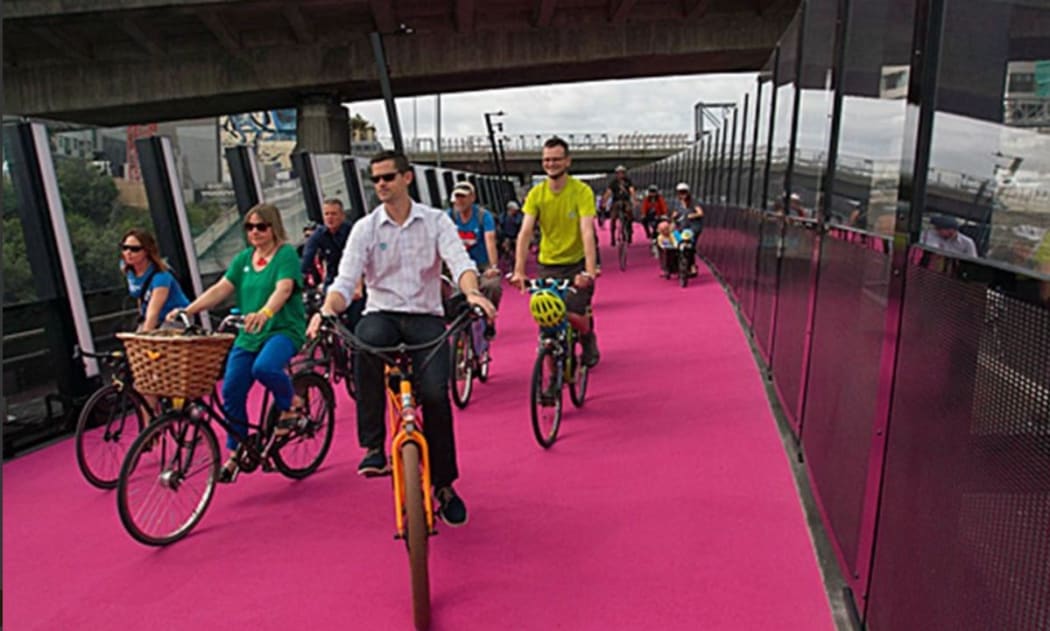
Auckland's popular $15 million dollar pink-paved bike path needs resurfacing a year after it opened. Photo: Auckland Council
"The current state of Auckland's roads is that they are full of cars - they've got parked cars to either side.
"There's a lot of space being taken up by the most inefficient mode: The average car carries 1.4 people that's when it's actually moving around and it's parked for 95 percent of the time.
She says public transport is of course a huge part of that, but "active transport" is also part of it.
"You're actually moving and enjoying and deriving benefits from the process of getting there.
"We've got to this point where you have to wrap yourself in a big metal carapace that's 20 times as big and heavy as you are in order to just go to the dairy and get a bottle of milk - something's a little bit out of whack there."
It seems to be having an effect - bike use, she says, is on the rise.
"For example, year-on-year in Auckland it was up 6.8 percent and in fact this October versus last October it's up by 17.7 percent.
"It's growing faster than traffic, faster than public transport."
Accidental message peddler
Gracewood says she never expected to be doing this.
"I was a mild-mannered literary editor, and then I sort of became a mild-mannered tree-saving campaigner," she says.
"This was around the pōhutukawa trees opposite MOTAT (Auckland's Museum of Transport and Technology) that were about to be bowled for some road widening.
"I just went into that instinctively on the grounds it just didn't make sense to chop down some 80-year-old trees to put some more cars on the road."

The six pōhutukawa trees near the Museum of Transport and Technology. Photo: Supplied
The campaign led by Gracewood gained traction and was eventually successful in sparing the trees.

Jolisa Gracewood Photo: RNZ
"I think was also a turning point: for thinking about the city thinking about transport planning; Auckland Transport thinking about its role in how it creates the spaces that we move around in."
She says she learned two things from that experience: that a variety of people from the community are willing to lend a hand to causes they believe in, and a combination of logic and emotion is needed for communicating effectively.
"You can't survive without either of those things in terms of telling the story."
Bike Auckland - which then had been called Cycle Action - brought her on board.
"Quite deliberately to try and get a wider audience, to just open up that picture of what a cycling activist might look like."
Vicious cycles: staying positive
She says her background is helpful in communicating those ideas in a straightforward, inoffensive way.
"'Employment' is one of those big, chunky, old, Latin-based words, [whereas] 'a job' - it's an Old English word, it tells you what it is, it tells you what it does.
"Likewise there's a kind of difference in vibe and tone between saying 'a cyclist' and 'a person on a bike'.
"Then, actually zooming in and seeing that person on a bike: is it a kid on a bike? Is it that guy that you know from round the corner on a bike? So ... you can put a bit more of a human face on it."
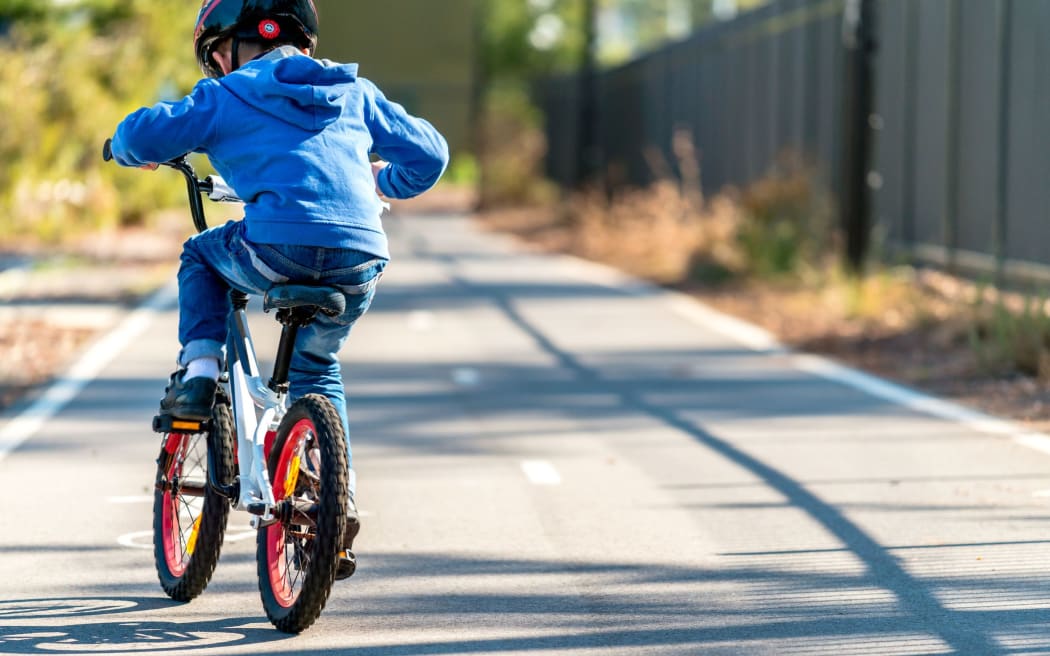
Photo: 123rf.com
"For example, I'm not a sporty bike person at all, it's not necessarily for me about fitness or speed. I'm just kind of lazy: it gets me there faster than walking."
The name change to Bike Auckland was part of that, she says.
"A lot of people don't think about themselves as 'cyclists', they don't necessarily think about themselves as 'activists' - but they know what they want and what they want is to ride a bike in Auckland.
"So the idea was just to simplify the proposition a little bit: 'join us, we like riding bikes, we like riding bikes in Auckland'."
Those kind of tactics have been useful for getting away from antagonistic debates made worse by the media.
"I think the negativity gets amplified, so we see and hear a lot more about it.
"I think there is positivity out there but it’s not necessarily reaching that level of amplification - because, maybe, it’s just not as click-baity to publish positive, happy stories."
Sometimes, though, the hostility is useful for her cause.
"Every time there’s one of those big backlash articles - and we won’t mention any names - people gravitate.
"They come to our page and they want to talk to each other about how this is not good enough anymore: we can’t just be randomly sharing these stories of hostility."
But … isn't biking dangerous?
She says the argument that biking is too dangerous is redundant.
"That's certainly the perception, but what's dangerous in that scenario is not the cycling itself - what's dangerous ... is cycling amongst cars going at a certain speed, and lots of them."
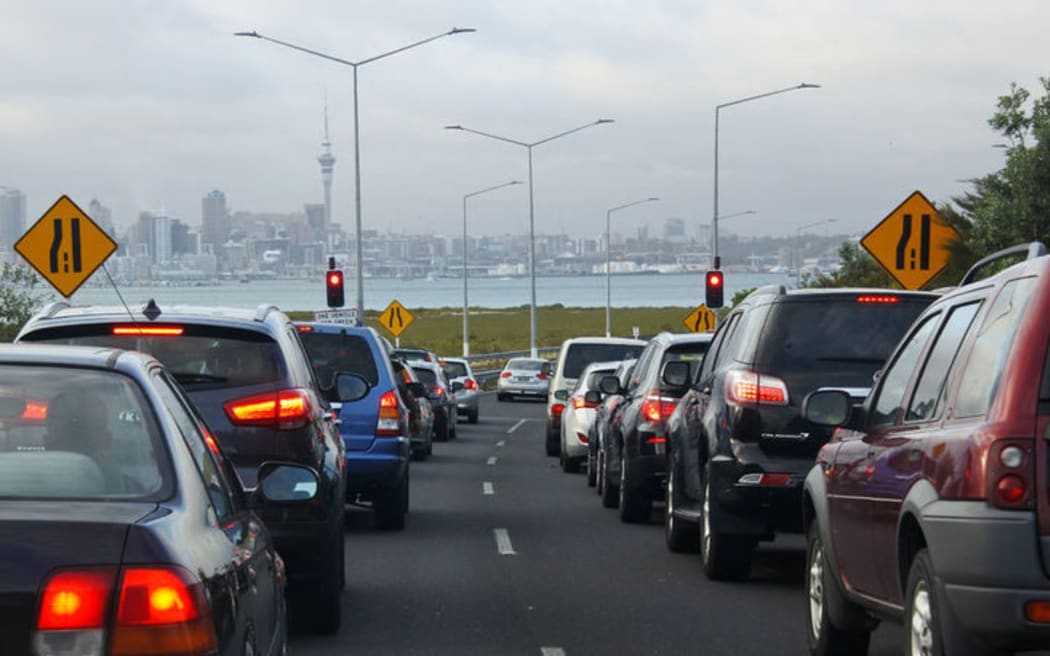
Photo: 123RF
She says various things can change those factors.
"By either lowering the speed of the general traffic or by providing protected spaces for people to ride - then you actually change the entire feeling of what it's like to ride a bike in a city.
"On paper as well it's not actually as dangerous as it sounds as feels: it's actually around about as risky as doing DIY, and it's about 200 times less dangerous than playing rugby."
But … bike lanes always seem empty?
The perception that bike lanes are always empty - and therefore unused and a wasteful use of space - is also deceptive, she says.
"If you stood on a train track it would be empty for the 14 minutes and 30 seconds between trains - then a train comes through with lots of people on it.
"Bike lanes are kind of similar - they're efficient.
"They're empty because they're free-flowing. We're so used to the idea that a road has to be jammed with traffic to be really working really well - when it's jammed with traffic it's not actually working very well at all.
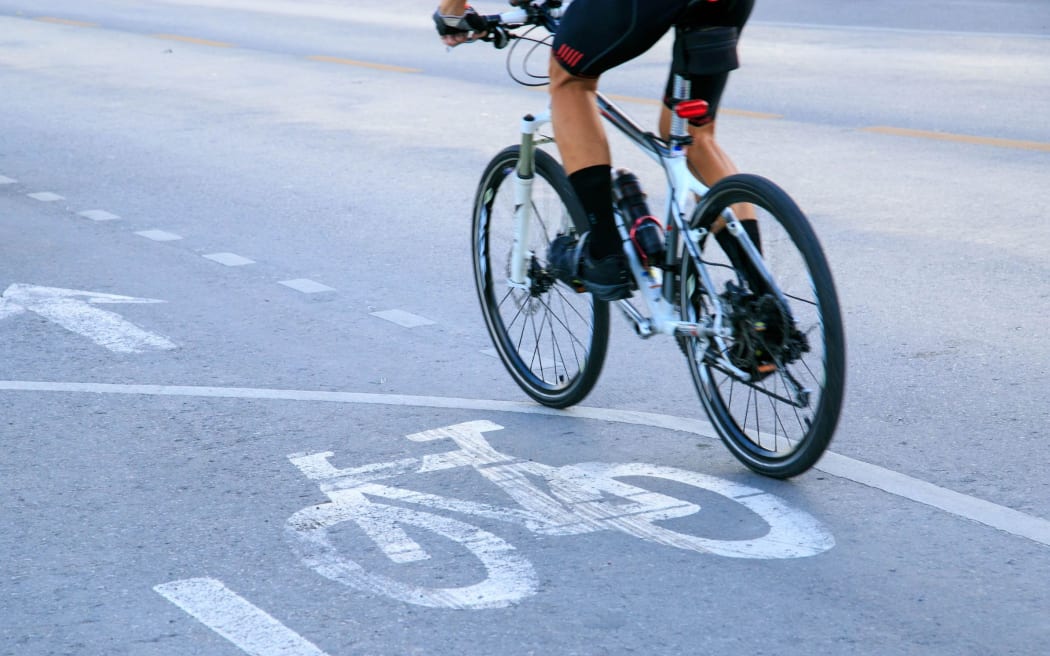
Photo: 123RF
"People on bikes are coming through - and they're coming through in pulses depending on traffic lights, they're also coming through at certain times of the day."
"The northwestern cycleway which comes into town from the west, that sees about 700-800 people on an average day. It could be as high as 1500 [on some days]."
She says while some articles have criticised usage statistics as not matching up to expectations, the predictions were really for 2026.
"And they assumed a fully built-out cycleway network … when you look at some of the cycleways that were being discussed in those predictions, a huge number were actually knocking on what they're predicted to be carrying in eight years time."
E-bikes, e-scooters and 'nimble mobility'
Gracewood was an early adopter of E-bikes, and says they're "phenomenal".
"It's facilitating things like taking kids to school - because you can plonk a couple of kids on the back of a bike, if it's an electrified bike you don't feel that extra weight as you travel.
"It's changing things like shopping because you can get a cargo bike and you've got that extra push."
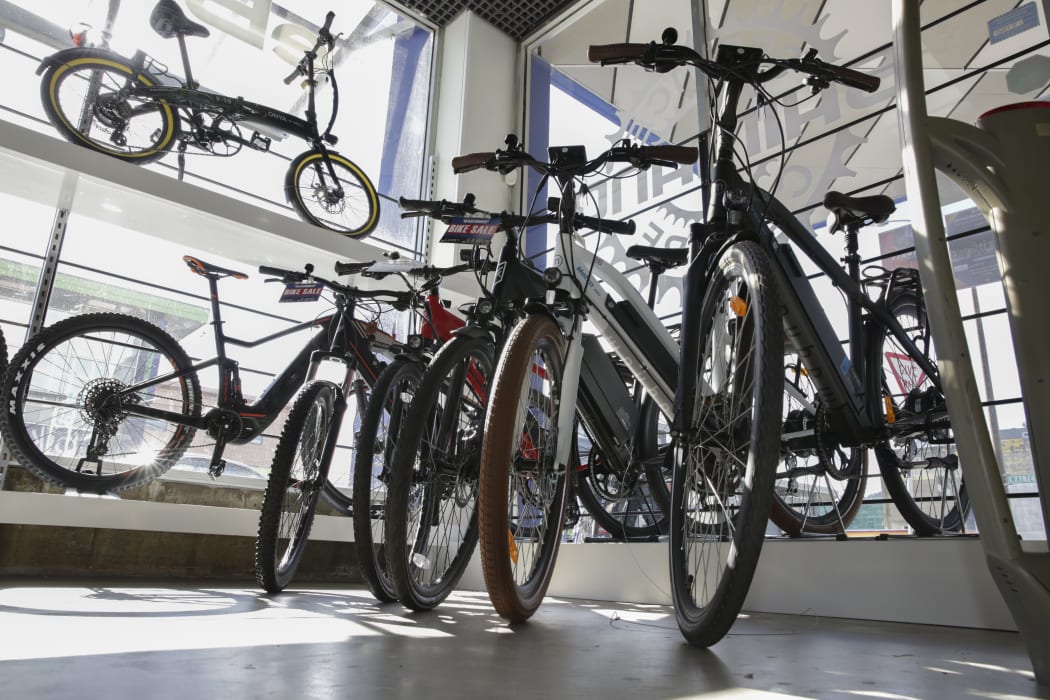
E-bikes use an electric motor to provide extra push on a standard push-bike. Photo: RNZ / Richard Tindiller
They can also be useful for office workers worried about working up a sweat before an important meeting.
"What the e-bike does is people say it turns Auckland into Amsterdam.
"You're riding towards a hill and you just crank up your electric support … just crank it up to Lance Armstrong level and the hill just lies down in front of you. It's incredible."
She says the new forms of ride-sharing becoming available - like Lime e-scooters and Onzo bikes - come with some problems, but act as a circuit breaker for discussions.
"Up till now it's been 'bikes versus cars', 'bikes versus pedestrians' - scooters sit somewhere in the middle of that discussion.
"They're not quite at home on the footpath and they're not totally comfortable … on the road either."

Californian ride-sharing scheme Lime uses scooters with GPS. Photo: Supplied
However, she says they're making an even stronger case for cycleways - or rather, protected pathways.
"There's this whole category of mobility - nimble mobility - where you're faster than walking but you're not protected from anything that you might bump into or that might bump into you.
"We'll have to come up with some clever new name but I think it's a glimpse of the future."
Bike Auckland is presenting the Light Path Festival, a block party with bells on, on Saturday 1 December from 5pm to 9pm.

